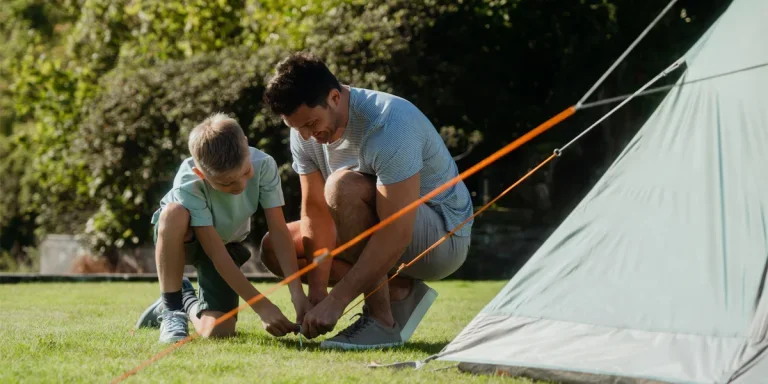Every camper’s nightmare is a snapped tent peg in the middle of a stormy night. Tent pegs may be tiny, but they determine a camping trip’s success. Yet, businesses often overlook them, stocking flimsy, generic pegs that bend or break under pressure. Imagine a family’s vacation ruined, a festival tent collapsing, or a backpacking adventure cut short—no business wants such experiences to ruin consumers’ trust in their products.
It’s time for businesses to step up their peg game. This article reveals why investing in quality, diverse pegs is great for customer service and a strategic move for building a loyal following of outdoor enthusiasts. It will also explore how businesses can choose top-notch tent pegs for their camping and tent inventories.
Table of Contents
Why tent pegs are an important part of camping tents that businesses shouldn’t overlook
Everything business buyers must consider when adding tent pegs to their camping inventory
Final words
Why tent pegs are an important part of camping tents that businesses shouldn’t overlook
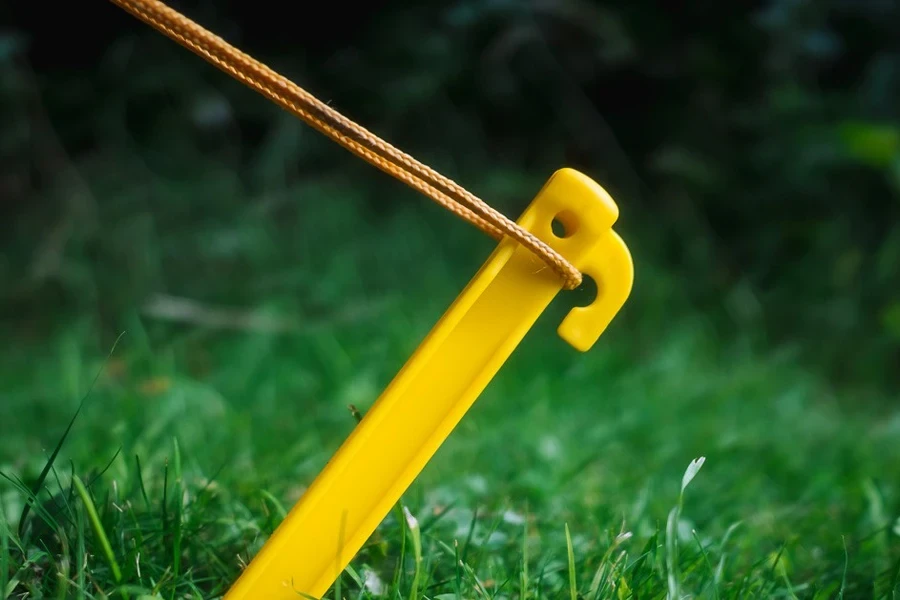
When offering customers gear for their outdoor adventures, high-quality tent pegs may not be the first thing that comes to mind. Premium tent pegs are not just nice to have; they are what makes or breaks a consumer’s experience. If campers don’t joke with their tent pegs, businesses shouldn’t either. Here’s why retailers should think twice before opting for cheaper alternatives:
Durability
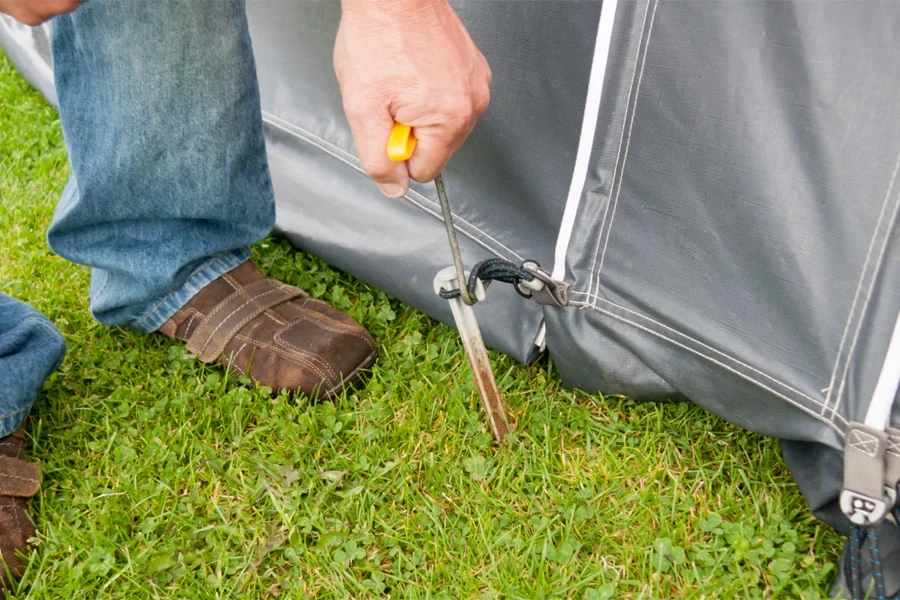
High-quality tent pegs, often made from steel or titanium, are built to withstand tough conditions. They resist bending or breaking under pressure, ensuring that tents stay securely anchored even in strong winds or rocky soil.
Longevity
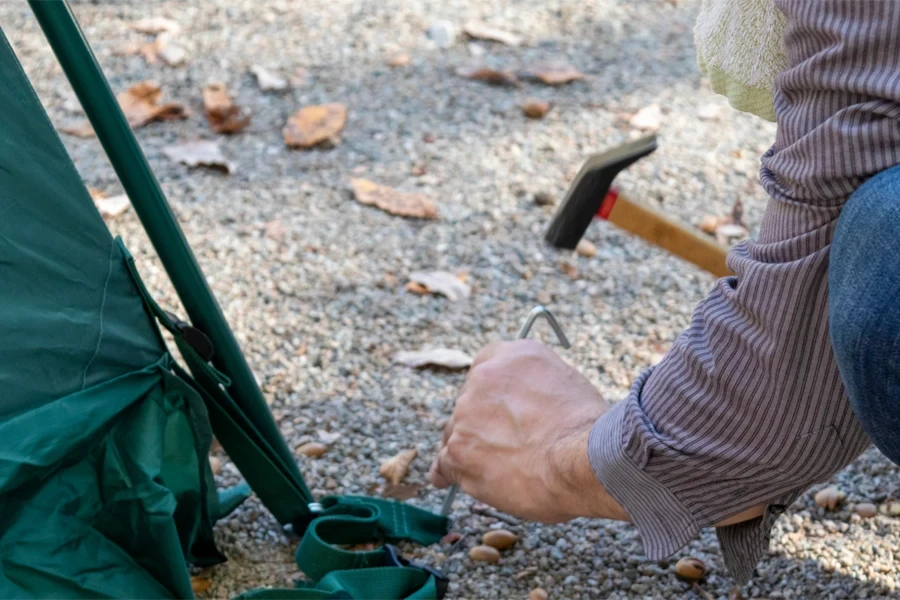
Cheaper pegs degrade over time due to environmental exposure, but high-quality options stay intact. It’s one of the main reasons campers want the best when purchasing tent pegs for their trips. After all, longevity equals more value for money, which will surely attract campers who don’t want to replace their pegs frequently.
Reputation and customer satisfaction

Stocking high-quality pegs is also beneficial for retailers’ reputations. A great brand image with pages packed with good reviews is a surefire way to attract more consumers who care more about performance than price. Keep consumers satisfied, and they will recommend retailers or become regular buyers.
Everything business buyers must consider when adding tent pegs to their camping inventory
Ground type
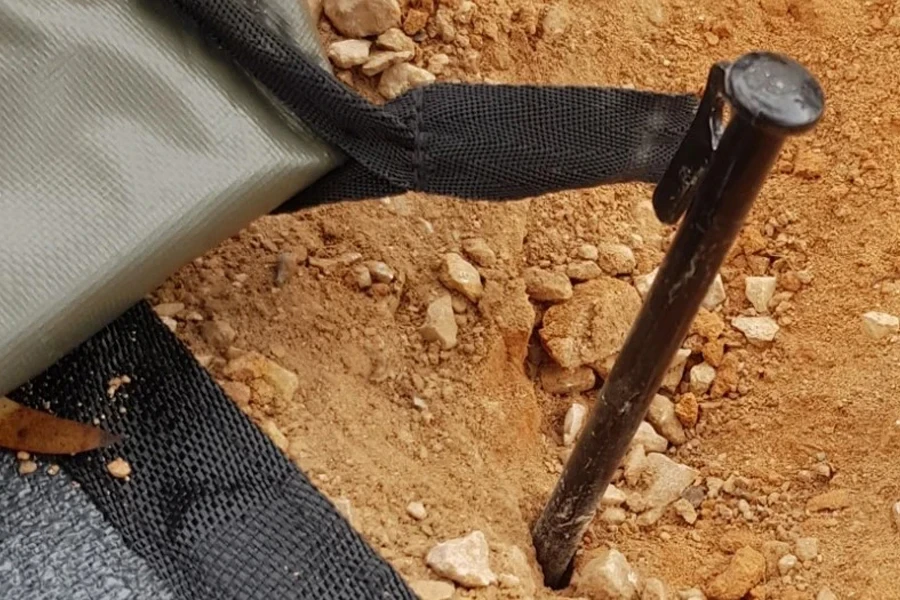
Before businesses restock tent pegs, they must understand their target customers’s camping preferences, especially for terrain. Different terrains demand different peg types for the best experience, so retailers can’t stock random products and call it a day. They must create categories based on the ground type and sell the right pegs under each one.
But why does terrain matter so much? The customer’s preferred terrain determines how secure the peg will be after installation. For example, if target campers mainly use sandy areas, they can only anchor to the loose soil with long, wide pegs with hooks. Similarly, campers who prefer more rocky terrain often search for durable pegs that can easily penetrate hard ground. Check the table below for more specifics on different terrains and their matching pegs.
| Ground type | Recommended tent pegs | Additional notes |
| Soft ground | Plastic or titanium Y pegs (for very light use) | These lightweight pegs are perfect for camping on soft ground, but may break or bend easily. |
| Grass and sand | Long, wide pegs with hooks or notches Delta ground anchors | These pegs offer better grip in loose soil. These anchors can distribute force effectively, making them great for wet soil. |
| Hard ground | Steel or titanium pegs with pointed tips | These pegs are durable and strong, capable of penetrating hard ground. |
| Pack dirt and gravel | Rock pegs V-shaped pegs | These pegs have chisel-like tips, perfect for rocky terrain. The V-shaped design offers extra stability and prevents rotation on hard ground. |
| Rocky ground | Rock pegs | These are also the go-to for rocky ground where other pegs struggle. |
| Boulders and stones | Shepard’s hook pegs | Consumers can easily anchor these pegs around rocks or roots. |
| Snow and ice | Snow pegs | These pegs are longer and wider to provide grip in snow. |
Tent size and shape
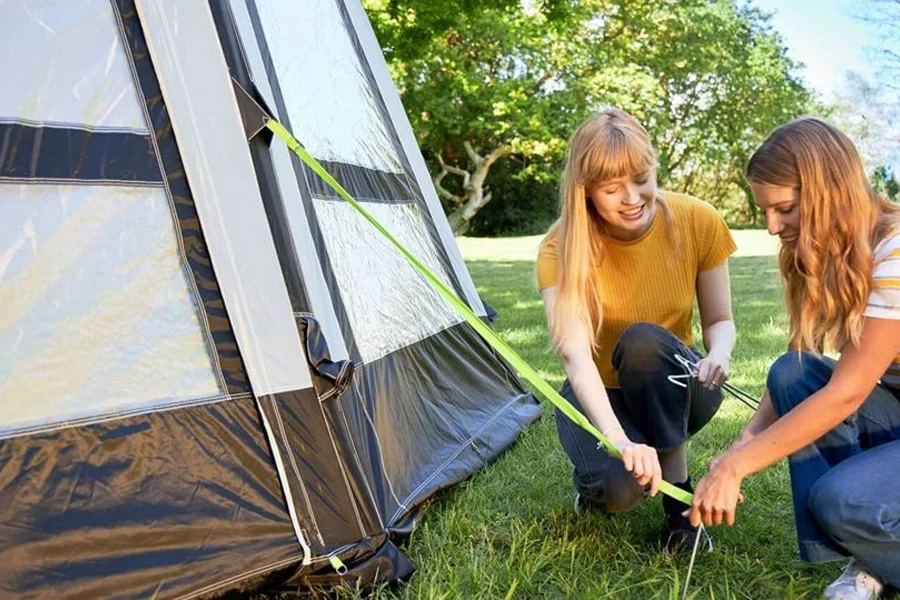
It’s no secret that tents come in different sizes and shapes, and it often determines how vulnerable they will be to the outdoor elements. For example, larger tents can easily become sails in the wind if campers don’t anchor them properly—or worse, fly away. Similarly, tall tents or those with complex designs will have multiple guy points, demanding more pegs than average tents.
Conversely, smaller tents require fewer and lighter pegs, as their lower profile and footprint make them less susceptible to wind uplift. Since campers often need multiple tent pegs for their campsites, retailers can consider selling them in bundles or pairs. See the table below for some popular tent sizes and shapes, as well as how many pegs business buyers can put in bundles.
| Tent size/capacity | Tent shape | Estimated number of pegs | Recommended peg types |
| 1-person | Backpacking/A-frame | 4 to 6 pegs | Lightweight and versatile Y-pegs. |
| 2-person | Dome/tunnel | 6 to 8 pegs | V-shaped pegs (great for soft and medium ground). Consider longer, wider options for sand and snow campers. |
| 3–4 person | Dome/tunnel | 8 to 10 pegs | V-shaped steel pegs for added strength in windy conditions. |
| 5–6 person | Cabin/dome/tunnel | 10 to 12 pegs | Steel and plastic pegs for different ground types. |
| 8+ person | Cabin/multi-room | More than 12 pegs | Steel rock pegs for rocky area camping and Shepard’s hooks for boulders. |
Peg shape
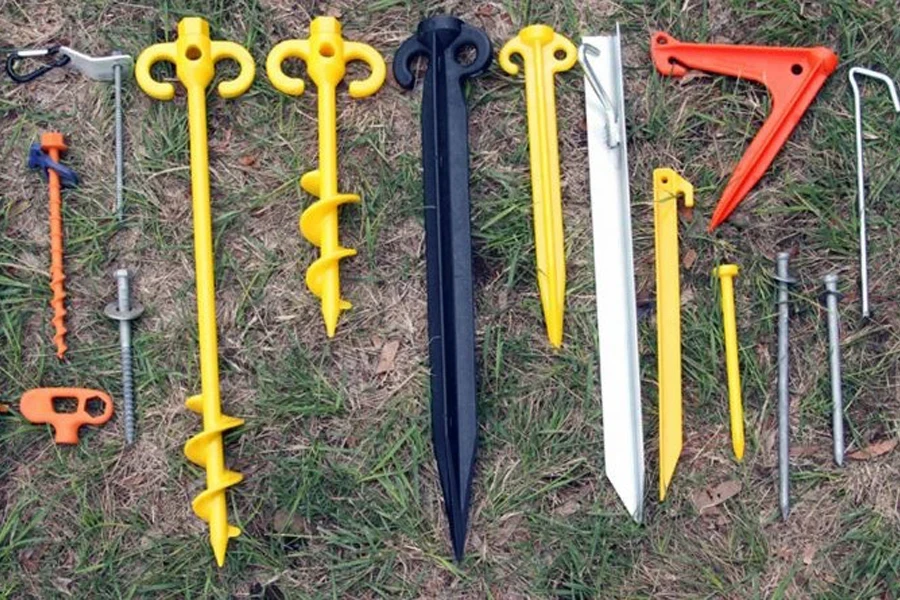
By now, retailers must be wondering what “V-shaped” and “Y-shaped” pegs are. Interestingly, all tent pegs have different shapes to boost their core purpose. The varied shapes are not for show—instead, manufacturers design them to tackle specific ground conditions and anchoring needs. Here’s a table highlighting the common tent peg shapes and their benefits.
| Peg shape | Description | Benefits |
| V-shaped | These pegs have a broad V at the top, which narrows to a pointed tip. | This peg shape offers the best grip in high surface areas. It also resists bending and twisting. |
| Y-shaped | These pegs have y-shaped tops with slightly curved or straight shafts. | They have excellent holding power in most terrains. Y-shaped pegs also resist pulling out due to their angled arms. |
| Skewer (nail) | These pegs are long and thin with pointed shafts. | Skewer pegs are super easy to insert into hard ground. They also have minimal impact, making them great for “Leave No Trace” camping. |
| Auger/screws | These pegs feature spiral-shaped shafts that screw into the ground. | Auger/screw pegs offer superior holding power in loose soil, sand, and snow. |
Peg materials
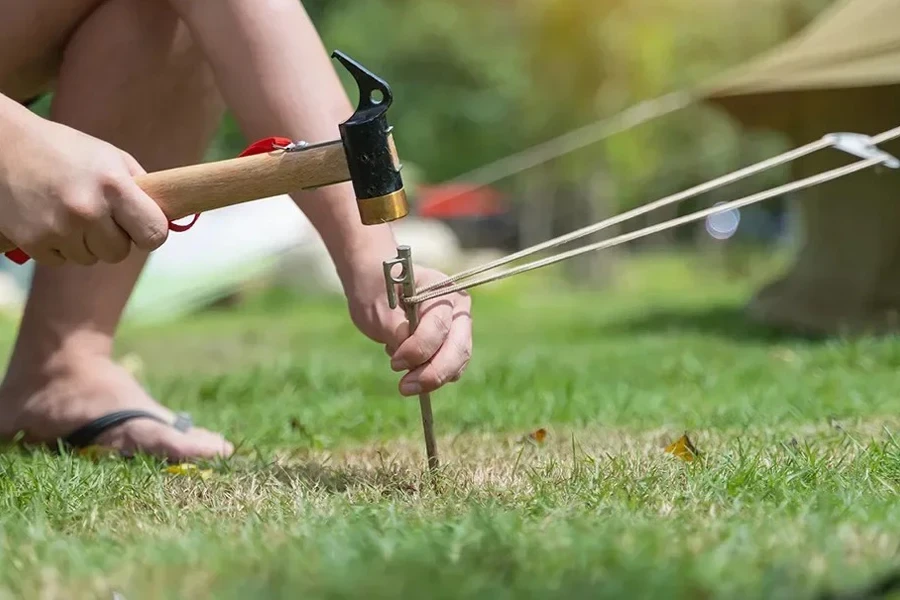
Steel
Steel pegs are renowned for their durability and affordability. They’re your go-to for general camping on most terrains, capable of handling a bit of rocky ground with ease. While not the lightest option, their strength makes them a reliable choice.
Aluminum
Are customers seeking a lightweight companion for backpacking? Aluminum pegs strike the balance between strength and portability. They’re not as unyielding as steel, but they’ll hold their own in softer soils. Their corrosion resistance is a bonus, keeping them in top shape through countless trips.
Titanium
For the ultralight enthusiast, titanium pegs offer the best performance. Feather-light yet surprisingly strong, they’re the ideal choice for minimizing pack weight without sacrificing reliability. While they come with a premium price, their longevity and durability make them a worthwhile investment.
Plastic
Plastic pegs are the go-to if consumers want to pitch their tents on soft ground, like grass. They’re inexpensive, lightweight, and won’t rust. However, they lack the strength to tackle tougher terrain, so campers mostly reserve them for specific conditions.
Length
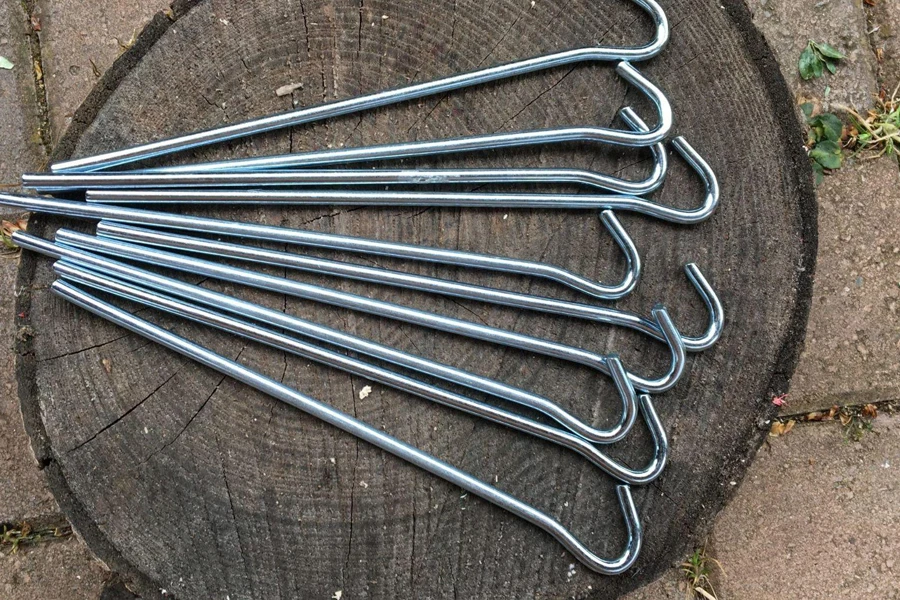
Tent pegs have different lengths that give them varying grip and stability. Length also determines where consumers can use the pegs properly. See the table below for more information on tent peg lengths.
| Peg length | Ideal terrain | Uses |
| 6–8 inches (15–20 cm) | Soft ground, grassy areas, sandy soils. | Securing tent corners, light guylines, and small tents. |
| 9–12 inches (23–30 cm) | The most common length is suitable for various terrains, including average soil, forest floors, and some rocky areas. | All-purpose use, securing larger tents, heavier guylines, and moderate wind conditions. |
| 12–16 inches (30–40 cm) | Harder ground, compacted soil, rocky areas, and high winds. | Heavy-duty use, securing large tents, strong winds, and ensuring maximum stability. |
| 16+ inches (40+ cm) | Extremely hard or rocky ground, sandy beaches, and snowy conditions. | Specialized use, anchoring large structures, and extreme weather conditions. |
Final words
Tent pegs should never be pushed to the side. Businesses must always offer options that match the consumer’s preferred terrain and tent type to give them the best experience. Remember to also consider material, length, and shape to create an unbeatable tent peg collection in 2024. Don’t hesitate to cater to a part of the 27,000 people searching for them in May 2024. Interested in the latest industry updates from the sports industry? Subscribe to the sports section on Alibaba Reads.
